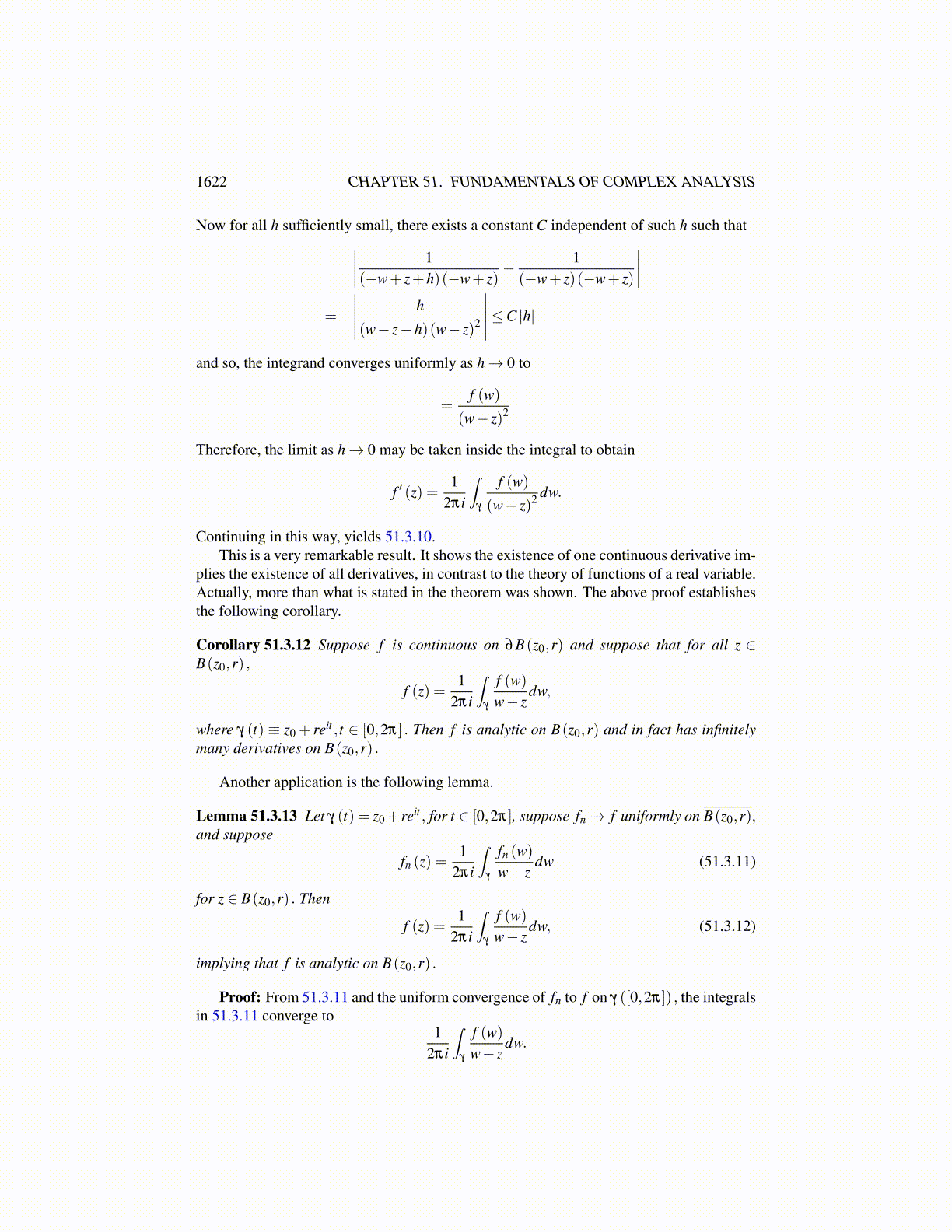
1622 CHAPTER 51. FUNDAMENTALS OF COMPLEX ANALYSIS
=
∥∥∥∥1h
∫ t ′+h
t ′φ t(s′,r)
dr−φ t (s, t)∥∥∥∥≤ 1
h
∫ t ′+h
t ′
∥∥φ t(s′,r)−φ t (s, t)
∥∥dr < ε
provided |(s′, t ′,h)− (s, t,0)| is small enough, this by continuity of φ t . Therefore, ∆(s, t,h)is uniformly continuous.∥∥∥∥1
h
(∫ b
aφ (s, t +h)ds−
∫ b
aφ (s, t)ds
)−∫ b
aφ t (s, t)ds
∥∥∥∥≤∫ b
a
∥∥∥∥φ (s, t +h)−φ (s, t)h
−φ t (s, t)∥∥∥∥ds =
∫ b
a∥∆(s, t,h)−φ t (s, t)∥ds
Then by uniform continuity, if h is small enough, the integrand on the right is smaller thanε .
The following is Cauchy’s integral formula for a disk.
Theorem 51.3.10 Let f : Ω→ X be analytic on the open set, Ω and let
B(z0,r)⊆Ω.
Let γ (t)≡ z0 + reit for t ∈ [0,2π] . Then if z ∈ B(z0,r) ,
f (z) =1
2πi
∫γ
f (w)w− z
dw. (51.3.9)
Proof: Consider for α ∈ [0,1] ,
g(α)≡∫ 2π
0
f(z+α
(z0 + reit − z
))reit + z0− z
rieitdt.
If α equals one, this reduces to the integral in 51.3.9. The idea is to show g is a constantand that g(0) = f (z)2πi. First consider the claim about g(0) .
g(0) =
(∫ 2π
0
reit
reit + z0− zdt)
i f (z)
= i f (z)
(∫ 2π
0
11− z−z0
reit
dt
)
= i f (z)∫ 2π
0
∞
∑n=0
r−ne−int (z− z0)n dt
because∣∣∣ z−z0
reit
∣∣∣ < 1. Since this sum converges uniformly you can interchange the sum andthe integral to obtain
g(0) = i f (z)∞
∑n=0
r−n (z− z0)n∫ 2π
0e−intdt
= 2πi f (z)